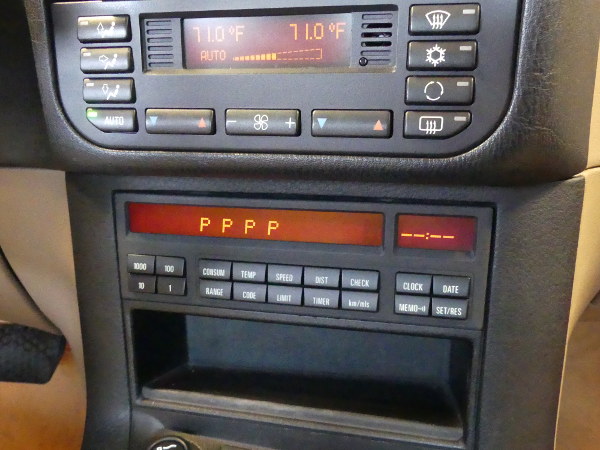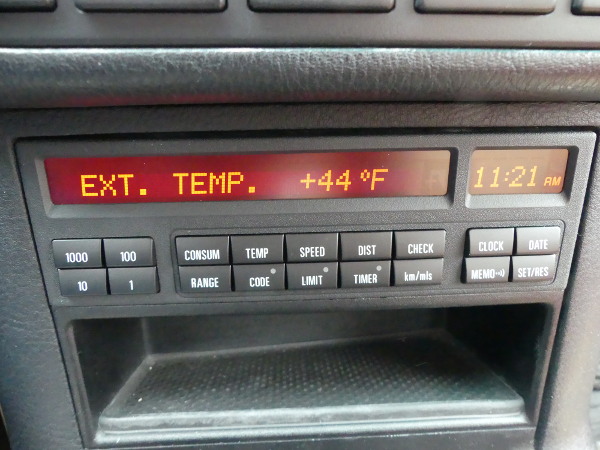Wednesday, December 7, 2016
X5 Hybrid Experience
I made arrangements to drop by the dealership to have my technician code the new OBC this morning and arrived while he was wrapping up an inspection on an X5 hybrid. As all techs perform a quick test drive to ensure proper functioning of the vehicle before it is returned to the customer he asked me to hop in.
I'd never been in any hybrid vehicle other than my friend's Prius so it was interesting to see BMW's take on this technology in action. My technician explained the status indicators in the gauge cluster, used iDrive to put the vehicle's hybrid system in "auto" mode and stepped on the "gas" to accelerate out of the parking lot. As the vehicle got "on step", as we pilots say, I couldn't help but smile and chuckle while pointing at the tach needle indicating zero.
As he drove his test loop I became impressed at how absolutely ordinary the vehicle felt. The highest praise I can give is that had it not otherwise been obvious due to the relatively quiet operation, charging port, smaller brakes, gauge cluster indications and badging I don't think I would have known it was leveraging such a specialized drivetrain. He mentioned that its pure electric range was limited to about 18 miles in "max electric" mode but that is enough to keep the engine off around town, particularly when taking advantage of regenerative braking. As the vehicle is equipped with high voltage air conditioning and heating the engine need not run continuously to keep you warm or cool, though it will run more often as required to meet energy demands so the maximum electric range will obviously be achieved during the spring and fall when neither heating nor cooling are required.
When the 4 cylinder engine kicks in and out the process is barely noticeable. There is no vibration or shudder. In fact, there's very little noise from the engine at all. BMW has clearly given up augmenting engine noise in their quest to placate people like me who will be pulled into the future kicking and screaming, and instead likely realized that anyone buying this vehicle actually wants it to be silent. So you really have to push the accelerator to the floor to get the engine to kick in and then rev it up to damn near redline to hear anything. This is not exactly my idea of BMW performance (sorry, BMW, the S54 was the gold standard for me) and I'll always take proven simplicity to new complexity, but BMW's new hybrid drivetrain is, without a doubt, intriguing technology.
The thing I liked most of all was the design of the RPM indicator, which should come as no surprise, as I have bemoaned some of their earlier designs. My opinion is that the RPM gauge is an engine instrument that should be pointing at 0 when the engine is off and 0 should be at the usual location (8 o'clock). So the good news is the gauge cluster carries forward the conventions of the past, while adding indications necessary to communicate the status of the hybrid drive. It's nice to see that BMW engineers are learning from their mistakes. Now only if I could get them to replace that unsafe beer tap shifter with that from the E46...
The news is not all good however. As nice as the gauge cluster looks, it is also a clear indication of everything that is wrong with automotive engineering today -- specifically, needless complexity that flies in the face of reliability. BMW stupidly decided to use a huge LCD spanning the entire cluster to display what are obviously fixed speedometer and RPM indicator markings. While it's clear the manufacturer will benefit here from not having to build and stock clusters with markings for different markets, recent issues with the comparitively simple cluster in my E36 are foretelling of the problems that owners of these full LCD clusters will eventually experience. These clusters can and will fail, and when they do, they will cost thousands to replace. The answer, unfortunately, will not be an extended maintenance warranty, but the purchase of a new car every 4-6 years simply to avoid the cost of long term maintenance. Which is exactly what BMW -- and indeed all the auto manufacturers these days -- want us to do.
I am warming to the idea of hybrid / electric drivetrains, but I won't own one for the foreseeable future because I still think the technology is immature and the long term costs of ownership not fully known. To add insult to injury, after trumpeting free scheduled maintenance for the last 20 years my tech told me BMW is now pulling back on those programs, limiting maintenance to 3/36, removing the most common maintenance items like brakes from the plan and requiring owners to buy an upgraded maintenance plan to cover these items. The goal being, of course, to pass as much of the hidden cost of maintenance of all this high technology to the owners, even within the warranty period.
New OBC Coding
Back at my technican's bay we got started on the OBC coding process. His original estimate of roughly an hour was based mostly on the time it normally takes the BMW coding software to do its job. I originally assumed it was because he had to code or program the entire vehicle to work around issues with the software but he said that was incorrect. The E36 supports the coding of individual modules and he did in fact plan to code only the OBC, but the software probes all vehicle modules before it allows the coding to start, and that process tends to take far too much time for some reason.
Fortunately, the probing process only took a few minutes and the coding process itself finished in a fraction of the time it normally requires. He noted that he had an E46 in recently and it took 15 minutes just to probe all the modules and present the prompt to start coding. The E46 has more modules to probe than the E36 but the E46 also uses CAN bus, which is a lot faster than K-bus. The coding shouln't have taken as little time as it did, but this was good news so I didn't complain.
Coding is , of course, different than programming. A module like the E36 OBC that comes without coding is actually pre-programmed during manufacturing with the latest or most appropriate firmware load that provides the functionality of the module. A module that comes without programming has no firmware loaded and therefore no brains aside from the ability to accept the firmware load. BMW has migrated to supplying new modules on the latest vehicles without programming because they found that the latest loads programmed to the modules occasionally caused issues when installed in an older vehicle with other modules equipped with older firmware loads.
Shaking his head in frustration, my technician related the fact that some modules are now so tightly integrated with the vehicle and its particular options that taking a module coded for one vehicle to another vehicle whose other modules are coded to support more options might actually result in options being removed in the target vehicle. His summary: with the E36 you can pretty much just swap parts appropriate for the type of vehicle (auto vs. manual, etc) and you're okay. With the E46 that is potentially problematic but done carefully enough it should work. The new cars? Just say no. This is progress, friends. Or so they tell me.
We spent an extra 10 minutes or so attempting to clear a coding fault that was reported by the coding software. Although it was pretty obvious that the coding was in fact successful because the module stopped showing "P P P P" on the main display and booted into normal functioning after a power cycle, the coding software continued to show the fault. When my technician connected the regular diagnostic system (SSS) it too detected the fault but cleared it successfully.
As I've mentioned before BMW actually pays its techs a small bounty if they submit a case demonstrating a fault in the diagnostic and programming software so my technician decided to submit my case. Of course, as he pointed out, BMW actually has to select his case in order for him to receive the bounty -- it isn't given merely for reporting the problem. But in my opinion BMW has the right idea here -- which is to provide a financial incentive to report bugs so they get fixed.
With the rest of the vehicle showing no faults, even for my recent evap issue, there was nothing else to do but wish my tech a happy holiday season and pull the car out of his bay. The good news is the main display is once again as bright as the clock display and it hasn't been that bright in years. Now that I have a spare OBC I may attempt to integrate the OpenOBC project board but after reviewing the website it's not clear whether the project is still alive in any meaningful sense as there have been no new firmware releases or forum posts by the maintainer in over two years. I could probably pick up the project where he left off but that would require something I currently lack -- lots of free time.
Mileage: 264850





